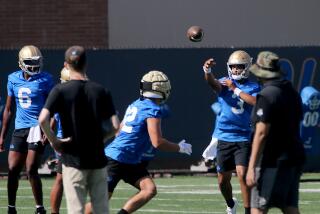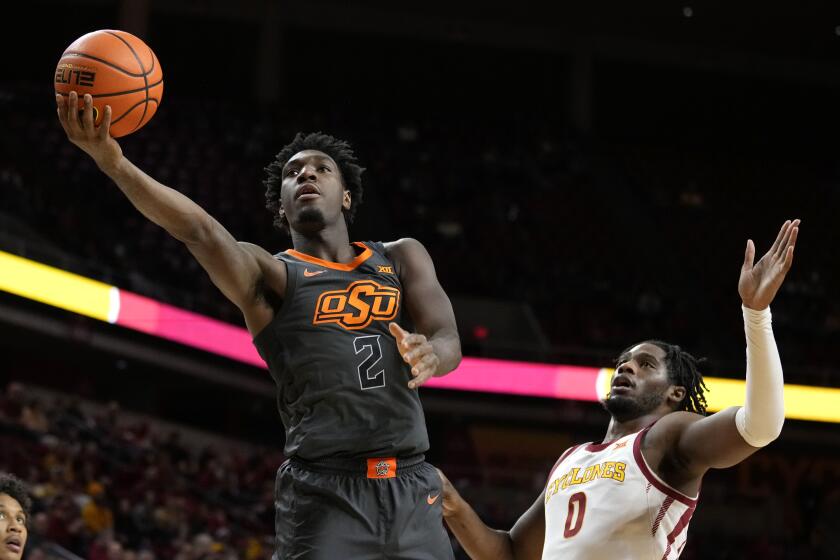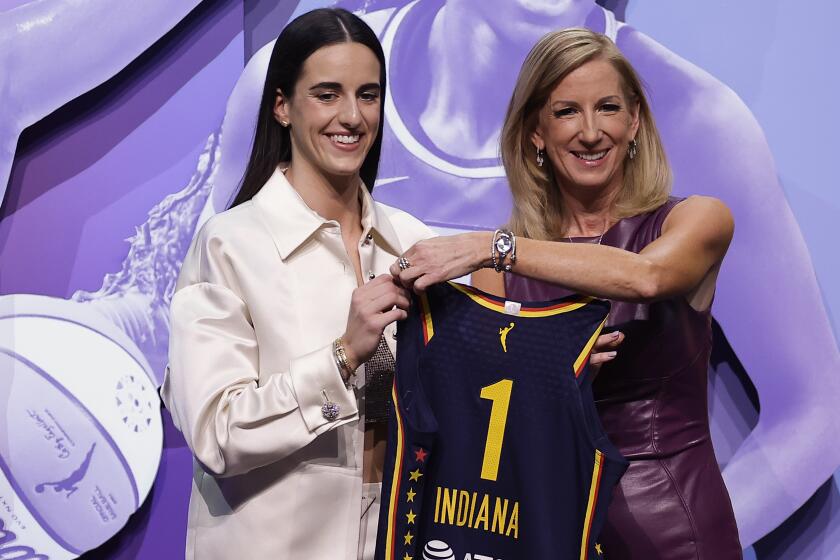NFL teams are choosing to camp closer to home

Sheltered from the blistering desert heat, the Arizona Cardinals hold training camp in the air-conditioned comfort of University of Phoenix Stadium. There are no more two-a-day practices, or bare-bones dormitory accommodations. The players and coaches stay nearby in an upscale, high-rise hotel.
“I call it Camp Cupcake,” said Cardinals Coach Bruce Arians, whose Augusts once were consumed by college football camps in the withering mugginess of Starkville, Miss., and Tuscaloosa, Ala.
What was once a rigorous rite of summer — a training camp in extreme elements — is now closer to a business trip for NFL teams, who can hold only one practice per day in order to abide by the rules of the collective bargaining agreement. And often, those trips aren’t really trips at all; 20 of the league’s 32 teams hold camps at their year-round facilities.
That’s a distinct change from 20 years ago, when all but a few teams relocated their headquarters to a remote locale, sometimes out of state, for camp.
It’s far more economical not to have to pack up your entire operation — including workout equipment, video department, medical facilities, dining halls and coaches’ offices — and move it to a new location.
“A lot of teams are saving the money and staying at their facilities,” Arians said. “But if you let the guys stay in a hotel together, you still get that team-building camaraderie thing of training camp. But if you let them go home and just come to work every day, you miss some of that.”
The Oakland Raiders still hit the road for training camp. So do the Buffalo Bills, Indianapolis Colts, Kansas City Chiefs, Pittsburgh Steelers, Carolina Panthers, Chicago Bears, Dallas Cowboys, Green Bay Packers, New Orleans Saints and Minnesota Vikings, with most of those teams relocating to within a 100-mile radius of their home cities.
For the most part, though, the NFL hard-bodies are homebodies, with teams staging camps at their headquarters, stadiums or in the immediate vicinity.
Teams stay home for various reasons, among them to save money, as a marketing mechanism and for comfort and convenience — seeing as the practice constraints means much of the work gets done in the meeting rooms.
As the hitting has tailed off, the tenor of training camp has changed dramatically.
“I hate it; they’re all walk-throughs,” former quarterback Rich Gannon said. “There’s no pads anymore. It’s so different than in years past. I can remember my rookie year; it was a marathon. You just counted the days down because it was so long.”
Especially in the eyes of people with an old-school perspective on the league, there’s something lost in staying at home and making training camp much less of a grind.
“We all in coaching talk about how important it is to get the focus on the task at hand,” said longtime NFL coach Dick Vermeil, who retired as coach of the Chiefs in 2005. “When you’re out of your city, or even out of the state, you get a great focus without interruptions. When it’s over, and you go back to your locker room, everything feels fresh and new and exciting. It’s not routine.”
The Rams are a bit of an exception. When they were in St. Louis, they held camp at their facility. Now, as they are in the process of establishing their headquarters in Thousand Oaks, they are staging training camp at UC Irvine. That enables them to create a larger footprint in their return to Southern California, helping them reconnect with their Orange County fan base. It also affords the team ample space at a school that doesn’t have a football team, and therefore does not present summer scheduling conflicts.
“There is no better time to meet your favorite player, to have an autograph signed, than at training camp,” said Kevin Demoff, the Rams’ chief operating officer. “As teams have gotten smarter about marketing, it’s a really great opportunity to be in your market with your most fan-friendly product.”
Twitter: @LATimesfarmer
More to Read
Get our high school sports newsletter
Prep Rally is devoted to the SoCal high school sports experience, bringing you scores, stories and a behind-the-scenes look at what makes prep sports so popular.
You may occasionally receive promotional content from the Los Angeles Times.







